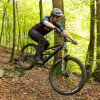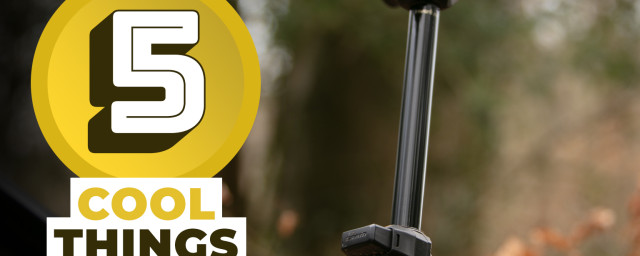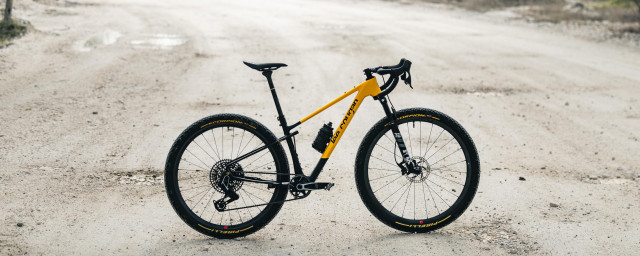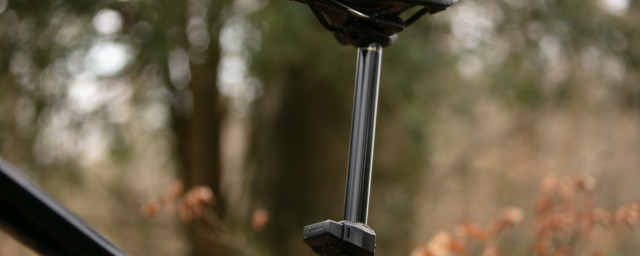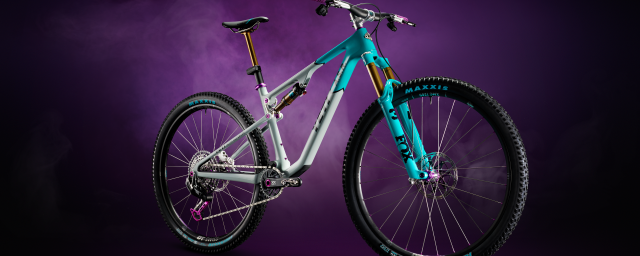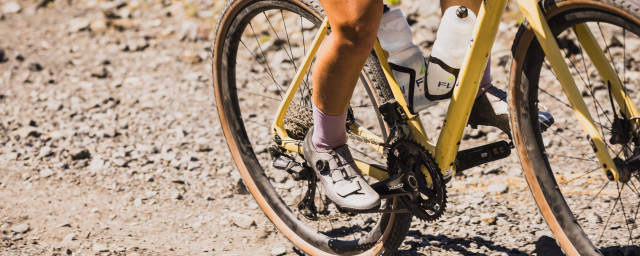How brands build bikes - From concept to the final product
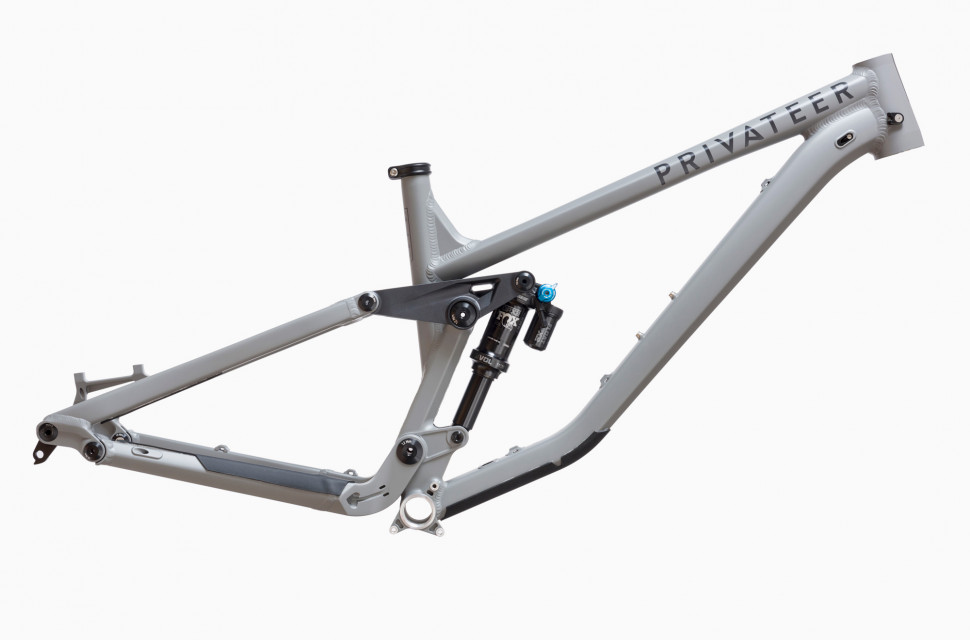
As with many passion sports, the sky-high price of the associated equipment can get pretty frustrating and out of reach for many enthusiasts. Cycling is a case in point with many bikes costing upwards of £5k but what’s not seen is what goes into creating a bike. We sat down with Dan Hicks, Privateer’s Frame Development Engineer, to find out exactly what happens - from the initial concept sketches and design to construction and its final destination on the showroom floor.
- Best mountain bikes 2023 - top options from cross-country to Enduro
- Enduro mountain biking - everything you need to know
- MTB enduro racing for beginners - how to prepare for your first race
Here, we’re going to concentrate on the conception of The Rider Firm’s mountain bike brand, Privateer, and its 161 race-ready mountain bike.
Founded in 2019, Privateer is a relatively young brand and, since its inception, has released three bikes: the 161, 141 and E161. Each of the brand’s bikes subsequently went on to receive high acclaim from the media, including our reviews. As a brand that is technically still rolling on its first model year, we thought it would be best to see how its designer, Dan Hicks, approaches bike design and tell us the story of how a bike is created.
Shaping the intent
"The first and the most important bit is figuring out what you want to do and it’s one of those well-trodden analogies that you can’t make all things to all men.”
As with any kind of product, a bike needs to fill a niche in the market. Dan explained that a new bike needs to be either a fully new design or improve on something that already exists.
That’s where Brand Managers come in. These people spend their lives riding bikes and talking to riders, journalists and race organisers, and reading reviews to find out what’s missing in the market and find out what people want. But Dan mentioned that it’s more listening and being present in places around the world to get a breadth of feedback.
This could be done by releasing a survey - but a poorly formatted survey can result in misleading answers. Instead, Privateer fully trusts the Brand Manager’s feedback to have an insight into what that gap is through listening to riders and watching how the industry is moving.
"In focusing in on a really interesting brief identifying a niche or some user needs allows you to design a product that does that thing very well and that creates what I think is a good product.”
With the information gathered by Brand Managers, Privateer recognised a growing undercurrent that people didn’t have six grand to spend on a bike but they were riding just as hard as the top guys that do have the wherewithal. Dan says Privateer didn’t feel the need to follow the norm and tie performance and a high price together.
"We wanted something that would perform 99% as well as the best bikes on the market but perhaps give up some of the frills to half the price point on the frame”
According to Dan's summary, there is a gap that Privateer identified in the market and it came with good timing as interest in Enduro and the Enduro World Series (EWS) was ramping up. Even without the bike, the EWS, and elite-level enduro racing is very expensive with travel costs, race entries and accommodation being a huge financial burden for privateer racers (riders without direct support from one specific team). Privateer also found that the current bikes were not actually that reliable and the most aggressive riders or racers were not getting more than a season out of their bikes without changing big parts of them.
While this information would usually help build a bike concept, it actually shaped Privateer's brand as a whole and formed the inspiration for its distinctive name. And now, with a clear goal of building a bike that could be raced hard, season after season, at an accessible price point, the brand had found its concept and unique selling point.
After specifying what it wants to do, the next step for a brand is to create a business case around the product - a bike - to determine whether people would be interested in buying the bike. It needs to appeal to enough people to make the project financially viable.
"We wanted to represent massive value in the bikes, that’s why we spec XT shifters and the SLX derailleurs because every rider who goes to the EWS out of their own pocket rips a derailleur off once or twice a season so you want the cheap replaceable bit but want the good shifting at the top end. It’s those insights that we get from working with people webbed into the thing they’re doing”
Designing suspension and geometry
After the brand has defined its concept, and has decided that it’s worth pursuing, that’s when the designers start thinking about what that product needs to suit the gap they’re looking to fill. And talking of bikes, this is where choices on suspension and geometry are made.
More often than not, brands are looking at what already exists, identifying what works and where things can be improved. But sometimes designers bounce around ideas that really push the boundaries. While many of those ideas don’t stick, some do and that’s where innovation can occur.
"Development can become chicken and egg at this point. You can see something that you like and want to make a change to, and that’s the ‘modification’ model where you get incremental progress. Or you can throw out the rule book and without bias as to how it's been done before is the right solution to the problem?" Dan says.
When it comes to choosing a suspension platform, it’s all down to what the brand wants to achieve with the specific bike. Because while all platforms are good, they each come with their own pros and cons and certain applications are better than others.
"It’s always a balance between things. The question is, can you bump up the factors that people notice and can you compromise on factors that nobody does and how far can you push that envelope before the compromises outweigh the benefits? And that’s kind of the game we all play.”
Privateer’s approach when designing the 161 was to provide something that’s consistent, predictable and understandable - and that meant Horst Link was the way to go. Dan says this was chosen as it allows the designers to adapt its performance without ending up with a design that requires difficult-to-manufacture shapes, lots of expertise and testing. It also gives the designers a great ability to tune the suspension’s characteristics. Dan says that it’s the easiest layout to achieve a good average performance but it’s one of the hardest to reach an extreme in a certain aspect.
"It’s a testament that when the patent lapsed for that [Horst Link], four or five of the biggest bike makers in the world dropped their own suspension platform and now all make Horst bikes.”
This is where Privateer employed the help of Redburn Design, a company that has plenty of experience in designing suspension platforms. The team drew upon its experience and began to hone in on the bike’s desired characteristics. While the design decisions are well-educated, there’s no telling of the performance until someone gets on the bike. Dan unkindly describes suspension design as 'educated guesswork’.
It could be that when doing a test ride, a bike that was so planted when braking could feel as if it’s tipping you forward when tackling repeated hits. When designing suspension, it’s a huge balance of compromises.
The feedback from the suspension testing feeds into the bike's geometry and its design intent. The 161 is designed for privateer riders who are often stronger than your average rider, so they can cope with extra roughness in exchange for better support.
"That’s where it becomes this cooperative approach - between us we’ve ridden hundreds of thousands of miles on bikes with lots of riders from all around the world on all sorts of trails where you’re buying into a brand’s experience to get that performance balance right”
Once the suspension has been sorted, the brand shifts its attention to the geometry. In the case of Privateer 161, this was about balance and consistency. The brand wanted a predictable bike that felt neutral.
In the past, all bikes were rather small so larger riders had to make do. To combat that, bikes have been getting longer but not all aspects of bike sizing were suitable for good performance for riders of different heights.
Bike sizing is an enormous aspect of geometry design and Privateer sees geometry with a size-specific approach and has considered how a bike should scale between sizes.
"We’ve now got to the point where the front end of bikes fits the vast majority of people unless you’re at the extreme but the trouble that came with making bikes bigger and the trouble with the incremental approach is that it’s easy to ignore what also contributes to performance. That for us is where our size-specific geometry came out. We wanted to create a bike that fits and handles the same regardless of your height."
"If we just grow the reach and keep the rear centre the same on a large bike, the rear centre is disproportionately short and upsets the bike handling. You can only experience these things for the size of bike you ride because I’m not 6ft 4 and I can’t ride a bike with a 510mm reach. We worked conscientiously to give the same ride feel on all frame sizes so you get that ‘Privateer’ handling no matter what bike you buy."
Privateer stepped away from carrying out incremental changes to the seat tube angle.
"The seat angle that we have on bikes was designed for road racing and we’ve been creeping forwards from road numbers half a degree at a time until someone’s not nervous anymore.”
The 161 is designed to climb steep fire roads, and a slack seat tube puts a lot of fatigue on someone’s lower back and hands. Back in the day, this was fixed by fitting seat posts with a setback back to front with the saddle slammed as far forward on the rails as possible to fight this fatigue.
Privateer calculated that an 80-degree angle was ideal for the 161, and though it seemed extreme compared to what was on the market, it was a logical step for Privateer for the bike's intended purpose. This then got picked up by many other brands.
"Innovation often is obvious if you’re looking at the right thing. Now basically every bike brand is 78-degrees [seat tube angle] or more on these bikes because instead of thinking what do I take and how to increment it, well this doesn’t work. What would work is to put that one something on the bike and test it and we were really happy with how that worked.”
Not everything about geometry design is based on extensive research and examples from other brands. The steep seat tube found on Privateer bikes is deemed by Dan as a bit of a leap of faith but backed up by the team’s wealth of experience in designing and riding bikes.
Taking the design to CAD and Manufacturing
After the suspension and geometry are set out, the designers take them into CAD (a digital design programme) where a 3D layout is made. Designers will use the programme when making decisions on wheel size, suspension travel, bottle mounts, and how they can build it all into the bike. Most importantly, CAD helps designers to identify critical clearances, hard points, or uncompromisable features that need to be considered. Once that’s all been put into 3D space, the bike design is nearly ready.
Dan says it’s very much like joining the dots. Though questions such as, “How do I make a strong and light tube” come into play. While putting the bike together in a 3D CAD program, designers will begin to make compromises where needed to balance desired characteristics while creating a bike that still aligns with the brand’s brief.
"We want to fit massive bearings (for longevity) but we’ve got a weight target to hit," Dan highlights as one of the possible compromises they need to make.
After the bike has been created in a 3D form on the screen, it's time for the brand to approach manufacturing partners to make sure they’ve got the kit required to build the frame and that it can be made easily, consistently and to the right specification levels. Here, the designers need to consider the balance of tooling costs, manufacturing costs and how it can achieve what it wants in this part of the process.
To give riders the best performance at a great value, Privateer tries to take the approach of 'Why would we bother spending any more money on something that doesn’t add value to the performance of the bike?'
Creating the first batch of prototypes
With the details, cost and consistent manufacturing all sorted, the next phase is placing a minimum order of frames to create prototypes. It’s common that the prototypes will come with CNC-machined samples to check tolerances and assembly without having to spend massive amounts on full-production forged prototypes.
"Up until this point, we’ve had to make (educated) assumptions about what the rider wants, about how the kinematics and suspension layout will work, and how the geometry would work for the rider. The better you are at your job, the better your assumptions and guesswork get. But fundamentally, until you’ve got the thing together and you send a few people flying down a hill on it, you don’t know whether you’ve misunderstood how something works,” Dan comments.
If the designers aren’t happy with any of these prototype bikes, or components to put the frame together, they’ll literally go back to the drawing board to alter the parts in question to fit better or to better achieve the goal of the bike.
Benchmarking and testing the bikes
"When we get the prototypes, we then start getting forensic - inspecting and testing them to make sure they are up to standard. This includes 3D scanning the frames to make sure the geometry and kinematics are correct, checking bearing tolerances, all of the clearances, how it assembles, how easy it is to work on, appearance, weld quality, conducting safety testing, rider testing and ultimately dialling in the shock tunes," Dan explains.
Privateer performs several shock tunes to find out which works best on that bike. "We work closely with suspension providers and a range of test riders who give consistent feedback to dial in the shocks base tune – we want to give every customer an excellent starting point for their bike out of the box."
A suspension provider will give a brand a box full of shocks each featuring a different tune and the brand will test which one suits the bike. They’ll also consider how these tunes work for riders of different weights, riding styles and terrains. But mainly, it’s about whether or not that shock tune aligns with the aims and intentions of that bike.
Ramping up production
Once the brand is happy with the bike that has been designed through prototyping and testing - both internally and with professional athletes - full-scale production can begin. Here, the manufacturing partner gets the go-ahead to create the forgings and tooling required for the final product.
"The point at which we pull the trigger for mass production is we are confident we think we’ve made a good product, but the real test is when the bike goes to market."
Because it's very likely that a brand’s manufacturing partner has plenty of experience in building frames, they’ll often have most of the tooling required, so that partner won’t need to build new tooling for every section of the bike. For example, ISCG mounts have been included on many bikes before the Privateer 161’s production, so that effectively saves the cost of building fresh tooling to fit one onto the 161.
This is also where quality control takes place and, at first, the guys behind the brand will check all of the first production frames. But as discrepancies in quality get ironed out and the bikes are built without issue, the engineers can be confident of the manufacturing partner’s process and don’t need to check as many.
Brands like Privateer take quality seriously; it sends staff out to the manufacturing partner to make sure that everything is being done to the standard required.
"We want these bikes to last a long time, we test them far above and beyond. We basically take the most onerous bits of all of the safety tests. We test above and beyond on everything because that’s what we expect from the kit. We want that frame to be bang on for you season after season," Dan explains.
Launching and marketing the finished bike
Now, the bike is ready to go and can be shared with the public. It's time for the marketing team to step in and create ads, videos and press releases announcing the new bike. Bikes will also be sent out to media outlets for review and brand ambassadors will get to work by putting the bike at the top of podiums, and by shouting about it through their social media.







